Tagged With ‘patchouli’
Lalique
Encre Noire à l’Extrême
18 November, 2016
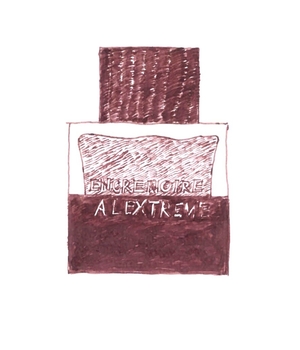 Lalique has been associated with perfume since 1907, when its founder, René Lalique, began to produce alluring glass bottles for the prodigiously entrepreneurial French perfumer François Coty. But it wasn’t until 1992 that the company launched a perfume of its own with Lalique de Lalique.
Lalique has been associated with perfume since 1907, when its founder, René Lalique, began to produce alluring glass bottles for the prodigiously entrepreneurial French perfumer François Coty. But it wasn’t until 1992 that the company launched a perfume of its own with Lalique de Lalique.
Encre Noire – literally ‘black ink’ – was released in 2006, and was quickly hailed as one of the best vetiver scents around. Created by the talented perfumer Nathalie Lorson from the Swiss fragrance-and-flavour firm Firmenich, it blends good-quality vetiver (whose earthy, slightly bitter smell comes from the roots of a tropical grass) with the woody notes of cypress and a long-lasting synthetic called Cashmeran, whose effect is as plush as its name.
Though Encre Noire is still available, and presumably a steady seller, Lalique has celebrated its 10th anniversary by launching a slightly more powerful, punchy version called Encre Noire à l’Extrême. Created again by Nathalie Lorson, the new perfume blends two different vetivers, one from Haiti and the from Java, and adds touches of iris, incense, sandalwood and patchouli.
If rather stronger and heavier than the earlier Encre Noire, it’s still a very attractive fragrance, and while Lalique claims that Encre Nore à l’Extrême ‘redefines masculinity’, we feel that it would smell equally appealing on a man or a woman. Think ink.
Frédéric Malle
Monsieur.
1 November, 2016
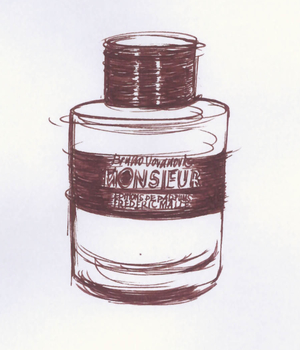 Monsieur. (aka Monsieur Dot) has divided opinion among my friends. Reactions have ranged from ‘cough mixture’ and ‘Vicks VapoRub’ to ‘virile’ and ‘chest wig’. Malle himself describes it as ‘super manly, very polished, though not affected’ and as having ‘a natural masculine elegance.’
Monsieur. (aka Monsieur Dot) has divided opinion among my friends. Reactions have ranged from ‘cough mixture’ and ‘Vicks VapoRub’ to ‘virile’ and ‘chest wig’. Malle himself describes it as ‘super manly, very polished, though not affected’ and as having ‘a natural masculine elegance.’
Created by the French perfumer Bruno Jovanovich, Monsieur. is a disco anthem to the 1970s playboy, all bay rum and alcohol with a whiff of cigarette smoke thrown in – think George Best meets Gianni Agnelli.
It’s based around patchouli, that all-too-popular scent of the time, but rather than the sweet, dope-addled patchouli of Camden Market hippy shops, this patchouli is raspy and slightly grubby round the edges, reminding us that it’s derived from an Indian roadside weed.
According to Malle, patchouli accounts for half of Jovanovich’s formula, but there’s also an odd mix of sweet and bitter ingredients, including mandarin orange and bay rum. The formula also includes synthetic amber and musk for longevity and plushness, with cedar, frankincense and vanilla adding extra smokiness and depth. ‘Bruno showed the appetite of a young perfumer,’ Malle says. ‘He wanted to work on a classic and to compare himself with the other star perfumers I’ve been working with. That being said, he proved that he is already super mature when it comes to finishing such a hard product to make.’
If you like old-fashioned masculine smells and rum then Monsieur Dot is probably for you; if not you might find its bitter patchouli a bit too punchy for your taste, though Malle is unrepentant. Asked whether he thinks that men are re-embracing a more traditional form of masculinity, he proffers a very Gallic reply. ‘We live in a kaleidoscope full of different characters – a sort of “à la carte” world. There must be traditional, no bullshit, traditional elegance out there.’
As for its intriguing name, Malle explains that his idea was for a perfume, in his words, ‘Designed for a real Monsieur with no extra thrills or necessary embellishment, hence the “.”’ I get his point.
Guerlain
Derby
21 August, 2015
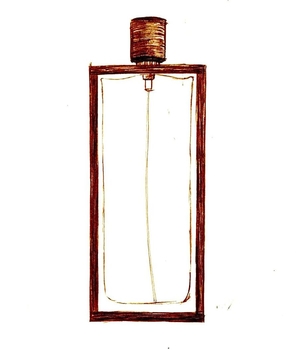 What a great perfume this is. Rich and complex yet totally wearable, Derby smells of old-fashioned luxury and style. It’s the kind of perfume that should have been name-checked in The Great Gatsby (surely the worst-written major novel of the 20th century), and yet it was first launched as recently as 1985, when electropop ruled the airwaves and shoulder-pads the size of aircraft carriers filled the pages of the fashion magazines.
What a great perfume this is. Rich and complex yet totally wearable, Derby smells of old-fashioned luxury and style. It’s the kind of perfume that should have been name-checked in The Great Gatsby (surely the worst-written major novel of the 20th century), and yet it was first launched as recently as 1985, when electropop ruled the airwaves and shoulder-pads the size of aircraft carriers filled the pages of the fashion magazines.
It was created by Jean-Paul Guerlain, the last member of the family to run the brand and a great perfumer in his own right: his other triumphs include Habit Rouge, Chamade and the fantastic Vétiver. Derby smells like crushed aromatic herbs when you first spray it on: rosemary and lavender with a hint of mint, but mixed with more exotic things like patchouli and sandalwood. Mace and pepper add a tiny touch of spice, while oakmoss, leather and vetiver give it extra depth and staying-power. After a while it smells more leathery than anything else, though still with herbs and spices mixed in – the scent of a Greek mountainside in summer.
For a long time Derby was quite hard to track down, which added to its mystique, but in 2005 Guerlain relaunched it as part of its Parisiens collection, at which point is was probably (though of course perfume companies never tell you these things) slightly ‘tweaked’ to change some of its ingredients (such as oakmoss) to comply with EU legislation. In 2011 it was repackaged in what I think is a rather cheap-looking balsawood frame, and its price went up as well: today it’s one of Guerlain’s most expensive fragrances, which I think is a shame, as it deserves to be widely worn.
Ermenegildo Zegna
Javanese Patchouli
4 July, 2015
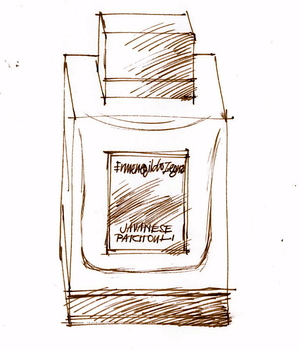
Patchouli – a tropical plant in the mint family – has been used as a perfume for centuries. The story goes that it was introduced to the West by Chinese and Indian traders, who used its leaves in bundles of silk as a moth repellent. The perfume oil is extracted from the leaves of several closely related species belonging to the Pogostemon family, which are grown commercially across Asia and West Africa.
For many people the scent remains indelibly associated with the hippy era, when miasmatic waves of cheap patchouli oil belched forth from bong shops and student campuses across the Western world.
But while there’s still cheap patchouli around (try visiting Camden Market over a sweaty weekend), the highest quality oils have a completely different character. Light rather than heavy, fresh rather than sweaty, top-notch patchouli is a refined, delicious fragrance, working equally well on its own or in combination with other perfume ingredients – which is why it’s so widely used in perfumery still.
There aren’t, though, that many really classy men’s perfumes in which patchouli is the dominant scent – I guess because perfume companies feel that those unfortunate hippy associations are still too strong. Givenchy Gentleman used to be a fine men’s example, but sadly it has been reformulated in recent years and isn’t a patch on its previous incarnation, so it’s been great to discover Javanese Patchouli, from the smart Italian business-suit brand Ermenegildo Zegna.
Javanese Patchouli is one of six ‘premium’ perfumes in Zegna’s ‘Essenze’ collection, which was launched in 2012. Each of the perfumes is built around a single scent, sourced from a single country or region: apart from Javanese Patchouli there’s Haitian Vetiver, Italian Bergamot, Indonesian Oud, Sicilian Mandarin and Florentine Iris.
Each 125ml bottle in the Essenze range currently (in mid-2014) costs £140, so they’re certainly not cheap; by comparison a 100ml bottle of Zegna’s Uomo scent costs £60, less than half as much. But – and I hope by now I don’t automatically associate quality with price – the two I’ve tried so far do feel luxurious and refined.
Javanese Patchouli smells, to me, like nothing else, in the sense that all I smell is patchouli, of the highest quality. Given that it’s such a lovely, gentle smell that’s absolutely fine with me, though apparently its ingredients also include soft, faintly chocolatey tonka bean, cedar wood, bergamot and pink pepper. I can’t smell any of those, but perhaps my nose is simply not sensitive enough; if they help make this perfume smell as good as it does, though, I’m perfectly happy that they’re there. I only wish I knew who the perfumer was so I could congratulate her or him.
The bottle (which after all is part of what you’re buying) is well made too, in heavy glass with a black magnetic cap that clonks satisfyingly in place, like the door of an expensive limousine. It’s not, perhaps, quite as sophisticated a design as comparable ‘premium’ perfumes from Dior or Chanel, but at least it’s not hideous or tacky, which all too many contemporary perfume bottles are. And the box it comes in conceals some rather clever cardboard technology, which locks the bottle snugly into place in an oddly pleasing way.
My only criticism, I suppose, is that I can’t smell it on my skin for very long. I was going to say that’s a bit of a swizz, since for £140 you’d hope to get something that didn’t disappear so fast, but I’m told that other people can smell it hours after I can, so at least someone else will get the benefit of your investment.
Guerlain
Habit Rouge
27 April, 2015
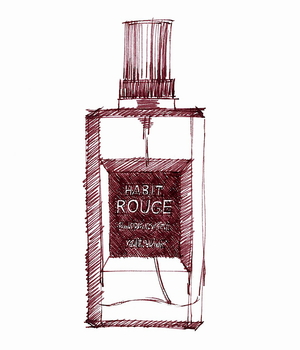 ‘Mass luxury’ may be the oxymoron of the moment, but the name of Habit Rouge is a nod back to a time when perfume really was a luxury enjoyed only by the stinking rich (eg the family Guerlain), among whom fox-hunting was a favourite pursuit.
‘Mass luxury’ may be the oxymoron of the moment, but the name of Habit Rouge is a nod back to a time when perfume really was a luxury enjoyed only by the stinking rich (eg the family Guerlain), among whom fox-hunting was a favourite pursuit.
Habit Rouge, in this context, is the French term for what British toffs call (with typical bourgeois-baiting mystification) ‘hunting pinks’, the scarlet riding jackets worn while hunting the fox. But that’s as far as the hunting or riding references go, which is probably a good thing, if you know what an actual fox or a horse-stable smells like.
Created by the last of the great Guerlain family perfumers, Jean-Paul, and launched in 1965, Habit Rouge was only the third Guerlain fragrance to be aimed at men. In character it is very different from its immediate predecessor, Vetiver, launched in 1959. While Vetiver is elegantly earthy (a brilliant contradiction in terms) and ineffably masculine, Habit Rouge is much more dandified, with a sharp, powdery sweetness that some people love but that makes others gag – imagine lemon sherbert in liquid form and you won’t be far wrong.
According to my friend the perfumer Roja Dove (who worked at Guerlain for twenty years), it ‘has an extraordinary volume of hesperidic materials, especially bergamot and lemon, which make up in excess of 25 per cent of the formula. Without question you can “feel” their effervescence.’It’s so zingy to start with that I wonder whether it might even contain a touch of aldehydes – the chemicals that give Chanel No. 5 its champagne fizz.
With all that lemon you’d imagine it would smell like an eau de cologne, but like other classic Guerlain perfumes Habit Rouge has great depth and complexity, and in the terminology of the perfume world it actually counts as an ‘oriental’-style fragrance, as behind the sherbert there’s a surprising amount of spice as well.
Though the version we have today was apparently ‘cleaned up’, as the industry jargon has it, by another fine perfumer, Edouard Fléchier, to comply with updated regulations governing the use of potentially harmful ingredients, it still smells wonderfully rich, with traces of vanilla and patchouli for those who smell it carefully.
Habit Rouge also lasts and lasts, which for me is an added plus when a perfume is as great as this – for anyone on a limited budget it’s hard to justify spending £70 or so on something that vanishes within an hour of putting it on. Definitely worth hunting down.
Annick Goutal
Eau de Monsieur
26 March, 2015
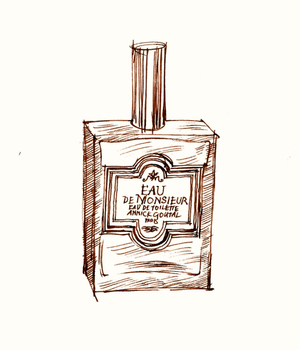 Mention the name Annick Goutal and the first scent that springs to mind is Eau d’Hadrien, the intensely lemony, slightly hair-sprayish scent that was launched in 1981 and went on to become the company’s best-seller.
Mention the name Annick Goutal and the first scent that springs to mind is Eau d’Hadrien, the intensely lemony, slightly hair-sprayish scent that was launched in 1981 and went on to become the company’s best-seller.
But before Eau d’Hadrien came Eau de Monsieur. Launched in 1980, discontinued for a while and then relaunched in 2013, it shares its lemony, eau de cologne-like zest with Eau d’Hadrien, but it’s an altogether quieter, softer fragrance.
Eau de Monsieur, like Eau d’Hadrien, is based around the zesty, zingy smell of lemons and the slightly pear-drop-lemony sweetness of lemon verbena (extracted from the leaves of a straggly South American shrub).
But while that’s pretty much the start and the finish of Eau d’Hadrien, that initial burst of sharp sweet freshness quickly fades to reveal what smells a bit like a sun-drenched Greek mountainside underneath – that scent of crushed thyme, cistus leaves and lavender, which in this case has an added touch of helichrysum, that strong-smelling everlasting flower that the French call immortelle.
Immortelle isn’t a scent that everybody loves: to me it has the richness of brandy and Christmas pudding and crackling pine-log fires, but to other people it has a medicinal TCP smell, which isn’t something you necessarily want in a perfume.
In Goutal’s fantastic Sables, released a few years later in 1985, immortelle is the main ingredient, but in Eau de Monsieur it’s used in moderation to give a subtle background sweetness. According to the list of ingredients on the Annick Goutal website, it also includes patchouli and sandalwood, which add a bit of their gentle warm woodiness to the mix, and there’s a little bit of bitterness too, which other writers have ascribed to that classic men’s-fragrance ingredient, vetiver.
It’s not, perhaps, the most original perfume out there, and it’s disappointing to discover that it only last an hour or so on the skin, but Eau de Monsieur is classy, attractive, natural-smelling and easy to wear, which is a lot more than you can say for the majority of men’s fragrances.
Chanel
Antaeus
8 December, 2014
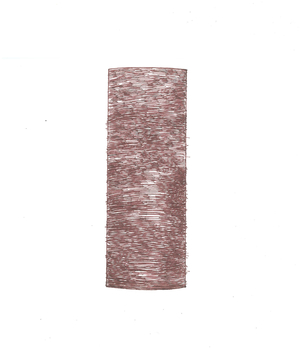 When I first started thinking about The Sniff Box, I wondered how I could make it look different from other perfume blogs. I knew I’d have no problem with the overall look, thanks to my super-talented friend, Leanda Ryan, whose design perfectly reflects the idea of ‘perfume in plain English’.
When I first started thinking about The Sniff Box, I wondered how I could make it look different from other perfume blogs. I knew I’d have no problem with the overall look, thanks to my super-talented friend, Leanda Ryan, whose design perfectly reflects the idea of ‘perfume in plain English’.
But illustrating individual perfumes is a problem, as you’ll gather if you look at other perfume sites on the interweb. The obvious thing to do is to use a ‘pack shot’, generally supplied by the brand in question: it’s what the brands like as that’s how they want you to see their scent, but how many times do you want to see the same cheesy photograph?
The trouble is, if you don’t use a photo of the bottle, what can you use instead? How do you illustrate something you can smell but can’t actually see? It’s interesting to check out what other people come up with, but given that few bloggers can afford to commission photography or illustration, they’re generally stuck with stock shots of things like perfume ingredients – a sprig of lavender, say, or a twist of lemon – which are as cheesy as the pack shots they’re trying to avoid.
It took a while, but finally it struck me: since I can draw, after a fashion, why not draw my own illustrations? And that’s how I began.
All of which is a roundabout way of saying that, when I was trying to draw my bottle of Antaeus this morning, it gradually dawned on me that it is one of the most beautiful perfume bottles I know. It’s also one of the simplest: a tall, square, black-glass container that, if you took away the classy sans-serif Chanel lettering, would bear a more-than-passing resemblance to sinister monolith in 2001: A Space Odyssey.
Designed (or at least commissioned) by Chanel’s long-standing artistic director, Jacques Helleu, and launched in 1981, Antaeus was a kind of dark-side twin to the brand’s only other men’s fragrance at that time, Pour Monsieur (launched way back in 1955). Their bottles may be almost identical in shape, but Pour Monsieur is as cool and transparent as Antaeus is brooding and mysterious, and that reflects the fact that they’re very different scents.
Pour Monsieur is a refined, impeccably discreet fragrance: perfect in its way but perhaps (dare one whisper it?) just a tiny bit dull. Antaeus, by contrast, is a dark sexy scent that was launched just as the disco era crashed and burned: the same year Ian Schrager and Steve Rubell sold out of Studio 54 and the big disease with a little name first reared its ugly head.
Antaeus (the scent) was created by Chanel’s much-fêted in-house perfumer, Jacques Polge, in collaboration with François Damachy, now head of fragrance at Dior). As suggestive as Pour Monsieur is safe, its sexiness comes from castoreum, derived from a secretion extracted from beaver wee (I kid you not), which despite its revolting origins becomes, after careful treatment, a potent perfume ingredient, with its musky, leathery smell.
It’s a warm, slightly spicy leather scent, with a lot of Mediterranean herbs, most notably clary sage and thyme, that most of us would probably associate with hot, rocky mountainsides in southern France and Greece. My nose isn’t yet sensitive enough to identify them, but it also apparently contains labdanum (derived from two different species of Cistus, another Mediterranean shrub), as well as sandalwood and patchouli, which presumably add to the slightly hippyish warmth of the scent.
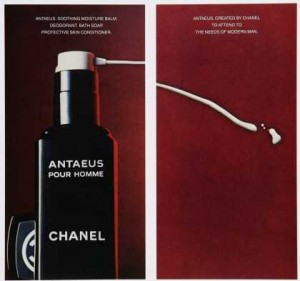 Antaeus became a big best-seller in the early 1980s initially, it seems, among gay men, and with its hints of sex and leather it’s easy to see why. Chanel itself tapped into this trend in 1983 with a delightfully pervy advert (pictured), whose subtext I can leave to your imagination.
Antaeus became a big best-seller in the early 1980s initially, it seems, among gay men, and with its hints of sex and leather it’s easy to see why. Chanel itself tapped into this trend in 1983 with a delightfully pervy advert (pictured), whose subtext I can leave to your imagination.
But gay men, as we’ve often been told, are classic early adopters, and these days Antaeus is just as likely to attract anyone who enjoys a rich and complex scent. It’s long been one of my favourites, for its warmth and easy appeal, but I love its darker origins too: sex (and history) in a bottle.
Givenchy
Givenchy Gentleman
25 October, 2014
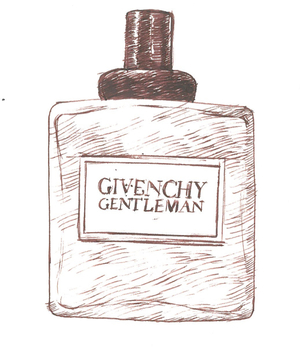
I don’t often, to be honest, feel very hippyish, but on the odd occasions when I do then Givenchy Gentleman suits my mood very well, with its distinct patchouli smell.
The original version was released in 1974 to tie in with couturier Hubert de Givenchy’s first ready-to-wear boutique, and it must have seemed bang on trend back then. Created by Paul Lèger (who also had a hand in the big-selling women’s perfume, Anaïs Anaïs), it was quickly hailed as a masterpiece, but has since been turfed out of the perfume pantheon, not least because the original recipe was fiddled about with a few years ago – presumably to save money and comply with tighter industry regulations.
If Givenchy Gentleman contained nothing but patchouli I wouldn’t be writing this review, but Lèger’s long list of ingredients included cinnamon, vetiver and something that approximates to the smell of leather. The last two in particular give the scent its appealing earthy, masculine character and stop it from being too sweet or cloying; it also contains (or contained) a whole host of other fragrance ‘notes’, including lemon and bergamot, tarragon, cedar and sandalwood, which added to Givenchy Gentleman’s complexity and depth.
It may not be the perfume that once it was, but I haven’t yet found a more wearable patchouli-based scent for men, though I have to admit that the latest version (has it been reformulated again?) starts well but then develops a slightly sour, unattractive undertone on the skin.
It’s been repackaged too, and the latest bottle has such a cheap label that if I didn’t know better I’d be inclined to suspect I’d been sold a dodgy knock-off from a market stall. Sadly it seems that the knock-off effect is entirely Givenchy’s own.
Hermès
Equipage
14 July, 2014
 Equipage is a perfume I hadn’t smelled for years. I had a bottle long ago, but when it ran out I never got round to replacing it. Actually I’d forgotten how good it smells, so I’m delighted to have it back. It’s as timeless and well made as a piece of Hermès saddlery, and it even has something of the same comforting, leathery smell.
Equipage is a perfume I hadn’t smelled for years. I had a bottle long ago, but when it ran out I never got round to replacing it. Actually I’d forgotten how good it smells, so I’m delighted to have it back. It’s as timeless and well made as a piece of Hermès saddlery, and it even has something of the same comforting, leathery smell.
The first Hermès perfume to be aimed at men, Equipage was created by Guy Robert, one of the leading perfumers of his generation. You could say that Robert had perfume in his blood. He learned his trade in Grasse, once the world capital of perfumery and still an important production centre today. His uncle, Henri Robert, succeeded Ernest Beaux as perfumer-in-chief at Chanel, where he created No.19 and Pour Monsieur.
Equipage shares much of its character with Pour Monsieur, smelling effortlessly grown-up, discreet and rather conservative. The funniest comment I’ve seen online is that it ‘makes you smell ten years older. Richer, maybe; but older’, and I think that’s right, but now I’m older myself it’s nice to at least smell rich.
For a men’s perfume it has rather more floral ingredients than one might expect, including lily of the valley, jasmine and carnation, but they’re so subtly blended together that you’d never know. The flowers give it a little sweetness, but that’s balanced by the spicy, clove-scented edge of carnation. Equipage also contains a lot of orange, in the form of bergamot, squeezed from the peel of the Sicilian bergamot orange, Citrus bergamia, which is also used to flavour Earl Grey tea.
But that’s not all. This rich and complex fragrance also includes oakmoss (or a synthetic equivalent), which is actually a type of lichen that smells like a forest after rain; as it happens oakmoss also features in Pour Monsieur and Chanel No19. You might also be able to smell a touch of patchouli, that favourite 1970s fragrance, and perhaps a little Badedas-like pine – another forest touch.
There’s much, much more, which makes Equipage worth returning to again and again. It may not be the most avant-garde of fragrances, but if you want something reassuringly luxurious, it’s up there with the best.
Aramis
Aramis 900
9 June, 2014
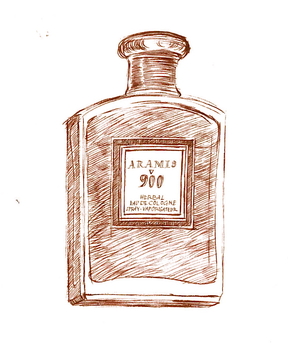
Aramis is one of those mid-market brands that seems to have been around for ever, and for that reason it’s often overlooked or, worse, looked down upon. Which is, I think, a shame, because there are some classic men’s perfumes in the range.
The all-men’s brand was launched in 1964 by Estée Lauder and her husband Joseph, with the eponymous Aramis (which I’ve reviewed here) as the first fragrance in the range. Though I’d always assumed the brand and the perfume were named after the character in The Three Musketeers, legend has it that it actually commemorates an obscure town in Armenia, which these days is transliterated as Yeremes. It sounds like a leg-pull, but then we’re also told that the Lauders were working with an Armenian designer at the time by the name of Arame Yeranyan, so you never know; I’ll let you know if I can get a definitive answer out of somebody.
Whatever the truth of the matter (and the perfume industry’s relationship with historical fact can sometimes be rather shaky), Aramis was a big success, and in 1973 it begat Aramis 900. Like the original Aramis it was created by Bernard Chant, a brilliant French perfumer who loved spicy, leathery fragrances, and it’s very much along those lines.
In fact, as it’s often been pointed out, if Aramis 900 hadn’t been marketed for men, it would have worked just as well as a woman’s scent – a good example of the obvious but too rarely grasped fact that in itself perfume has no gender. Just smell Clinique’s classic woman’s perfume, Aromatics Elixir, and you’ll see what I mean: it was also created by Bernard Chant and to many people smells identical to Aramis 900.
Aramis 900 is a deep, spicy, complicated scent, which makes most contemporary offerings smell weedy and washed-out by comparison. Today you’d only expect to find a men’s fragrance smelling this rich and complex in an expensive ‘exclusive’ range like Tom Ford or Armani Privée, but when it was launched it was aimed squarely at the middle market: these were not expensive perfumes.
Like the majority of other men’s perfumes, Aramis 900 includes lemon and bergamot, but among its more persistent and powerful ingredients are carnation, orris (iris) root, geranium, oakmoss, patchouli and vetiver, as well as rosewood oil, the natural form of which comes from an increasingly threatened rainforest tree, Dalbergia nigra.
Unlike most modern men’s perfumes, though, Aramis 900 has a predominantly floral scent, which to me smells like a mix of clove-scented carnation and old-fashioned rose. Though floral fragrances were popular with Victorian men, in 20th-century western culture they came to be thought of as ‘girly’, though for no particularly logical reason as far as I can see.
Luckily that didn’t stop perfumers from using floral ingredients in men’s perfumes, but in the case of Aramis 900 those flowery scents are brilliantly disguised by all sorts of other things, including a faintly ‘dirty’ smell that adds an oddly sexy extra to the mix. The forest-floor oakmoss and vetiver also stop it smelling sweet, while the carnation (despite being a flower) gives it the same kind of peppery spiciness that you can smell in Chanel’s Egoïste.
The amazing thing, to me, is that perfumes like Aramis 900 have been so cheap for so long, but in 2009 it seems to have dawned on Estée Lauder Inc what they had on their hands, and six perfumes in the Aramis range – including Aramis 900 – were relaunched and repackaged in matching bottles. Now priced at a less mass-market £60 and titled a ‘Gentleman’s Collection’, presumably the hope is that men who liked one fragrance might go on to collect the rest. Given the quality of most men’s fragrances today I’d say that wouldn’t be a bad idea.